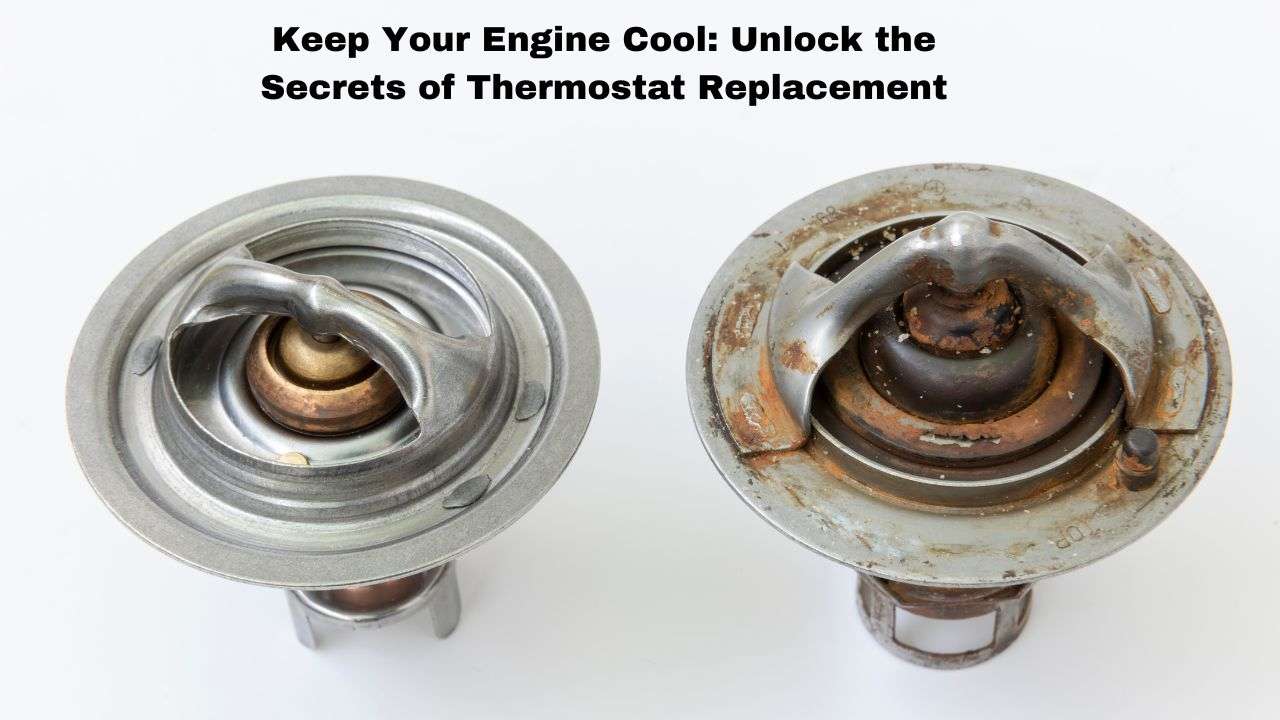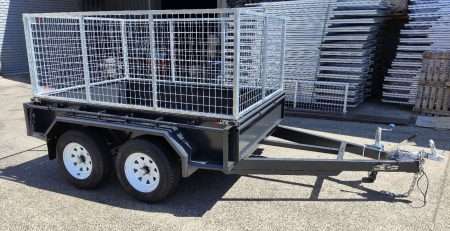
Keep Your Engine Cool: Unlock the Secrets of Thermostat Replacement
Understanding Engine Thermostats
Before one can delve into the specifics of engine thermostat replacement, it’s essential to have a fundamental understanding of what an engine thermostat does and the different types available.
Role of Engine Thermostats
The engine thermostat is a crucial component of the automotive engine cooling system. It controls the flow of coolant and regulates the engine temperature.
The primary role of the engine thermostat is to ensure that the engine reaches its optimal operating temperature quickly and maintains it throughout operation. By doing so, it helps to prevent engine overheating, ensuring that the engine performs well, reducing wear and tear, and preventing potential engine damage.
In addition, the thermostat in a vehicle is designed to measure the temperature of the coolant in the engine. This information is then relayed to the driver via a thermostat gauge or dial on the dashboard to indicate the coolant temperature. Ignoring warnings from this gauge can lead to significant damage to the engine.
Types of Engine Thermostats
There are several types of engine thermostats available on the market, each designed to function optimally under different conditions. However, all types share the same fundamental purpose: to monitor and regulate the temperature of the engine coolant and, by extension, the engine itself.
Comprehending the different types of thermostats and their functions can help you make an informed decision when it’s time for a replacement. It can also help you better understand how your vehicle operates, which can be beneficial if you ever encounter issues like an engine coolant leak or need an engine coolant replacement.
Through this understanding of engine thermostats and their functions, you’re now better equipped to recognise potential issues and understand their impact on your vehicle. This knowledge will prove invaluable as we move on to discuss the signs of a failing thermostat and the process of engine thermostat replacement.
Identifying Thermostat Problems
Recognising early signs of a faulty engine thermostat can be the key to preventing costly repairs and maintaining your vehicle’s performance. Let’s delve into the common signs of a failing thermostat and the impact of a faulty one.
Signs of a Failing Thermostat
A thermostat is an integral part of your vehicle’s engine cooling system. When it’s not working properly, you may notice a few telltale signs:
Inconsistent Temperature Gauge Readings: If the temperature gauge in your vehicle consistently reads too cold or too hot, it may indicate a problem with the thermostat or the coolant or engine itself. In the case of the thermostat being stuck open, it could cause overcooling and require replacement (Burt Brothers).
Rumbling Engine Sounds: A rumbling sound coming from the engine could indicate a problem with the coolant in the radiator boiling. A malfunctioning thermostat that incorrectly reads the coolant temperature may be to blame for this.
Coolant Leaks: Coolant leaks, especially when the engine overheats, can be a sign of a broken thermostat that needs replacement. Ignoring the problem could lead to further leakage and affect other engine cooling system parts.
The appearance of any of these signs warrants immediate attention and possibly an engine thermostat replacement.
Impact of a Faulty Thermostat
A faulty or malfunctioning engine thermostat can have significant repercussions on your vehicle’s performance and longevity. It can cause the engine to overheat or run too cold, leading to reduced performance, increased wear and tear, and potential engine damage.
Ignoring a faulty thermostat can escalate the problem, causing damage to the engine. Timely detection and replacement can prevent these problems and help maintain the efficiency and lifespan of your vehicle’s engine.
Remember, every component of your vehicle’s engine cooling system, including the thermostat, plays a crucial role in ensuring optimal engine temperature and performance. Regular maintenance and timely engine cooling system repairs can help keep your engine running smoothly for years to come.
Replacing Engine Thermostats
When it comes to maintaining your vehicle’s engine, understanding when and how to replace the engine thermostat is crucial. In this section, we will explore the signs that indicate when a thermostat needs replacement and the steps involved in the replacement process.
When to Replace an Engine Thermostat
A thermostat in a vehicle is designed to measure the temperature of the coolant in the engine and indicate the coolant temperature on the dashboard (Burt Brothers). It’s important to note that a faulty thermostat can cause damage to the engine, making its timely replacement essential.
Here are some signs to look for that may indicate the need for a thermostat replacement:
- If the temperature gauge continues to read too cold or too hot, it may be a sign of a problem with the thermostat or the coolant or engine itself. In the case of the thermostat being stuck open, it could cause overcooling and require replacement (Burt Brothers).
- A rumbling sound from the engine could indicate a problem with the coolant in the radiator boiling, which may be due to a faulty thermostat not reading the coolant temperature correctly.
- Coolant leaks, especially when the engine overheats, can be a sign of a broken thermostat that needs replacement. Ignoring the problem could lead to further leakage and affect other engine cooling system parts.
- If a vehicle has ever overheated, it may be necessary to replace the thermostat along with other components of the cooling system that may have been damaged.
Steps in Thermostat Replacement
The process of replacing an engine thermostat involves a few critical steps. While the exact process may vary depending on the vehicle model, the general steps include:
Locate the thermostat: The thermostat is typically located in a housing where the top radiator hose connects to the engine.
Remove the Old Thermostat: After disconnecting the battery and draining the coolant, remove the bolts that secure the thermostat housing, and take out the old thermostat.
Clean the Housing: Before installing the new thermostat, clean the inside of the housing and the engine where the thermostat sits.
Install the New Thermostat: Place the new thermostat into the engine with the jiggle valve positioned at the top. Reinstall the thermostat housing.
Refill Coolant: After the new thermostat is installed, refill the engine coolant and reattach the battery.
Test the new Thermostat: Start the engine and check for leaks. Monitor the temperature gauge to ensure the new thermostat is working properly.
Always remember to follow your vehicle’s specific manual or consult a professional mechanic when performing an engine thermostat replacement. Regular maintenance and timely replacement of faulty parts help keep your vehicle’s engine cooling system in good working condition.
Maintenance Tips and Precautions
Just like any other component in your car’s engine cooling system, the thermostat requires regular checks and maintenance. Proper care can extend the lifespan of your thermostat, ensuring your engine stays cool and operates efficiently.
Keeping Your Thermostat in Good Shape
Thermostats generally last for years, sometimes even the lifetime of a vehicle. However, maintaining the thermostat is crucial to prevent it from sticking in either the closed or open position.
If the thermostat sticks in the closed position, coolant can be trapped in the engine and cause overheating. If it sticks in the open position, the engine may fail to reach full operating temperature and reduce heat output from the climate system (source).
Regular checks of your thermostat can help identify any potential issues early, preventing severe damage to your engine. This includes monitoring the temperature gauge on your dashboard and looking out for any signs of engine coolant leaks.
In the event of an overheating situation, it may be necessary to replace the thermostat along with other components of the cooling system that may have been damaged. Overheating can cause severe damage to the thermostat, hoses, gaskets, and thermostat housing.
Common Thermostat Replacement Missteps
While the process of replacing a thermostat seems simple, there are a few common mistakes that can occur during an engine thermostat replacement.
Incorrect Installation: The thermostat must be installed the right way round. An incorrectly installed thermostat can cause the engine to overheat.
Not Replacing the Gasket: The gasket creates a seal between the thermostat and the engine. If the gasket isn’t replaced with the thermostat, it can lead to leaks.
Using the Wrong Coolant: Always use the recommended automotive engine coolant for your vehicle. Using the wrong coolant can cause damage to the engine and the thermostat.
Not Bleeding the System: After replacing the thermostat and refilling the coolant, it’s important to bleed the system to remove any air pockets that can cause overheating.
Avoiding these common mistakes can ensure a successful engine thermostat replacement. For a detailed guide on how to replace a thermostat, check out our article on engine cooling system repair. Regular maintenance of all your engine cooling system components will help keep your engine running smoothly and efficiently.
Benefits of Timely Thermostat Replacement
Regular maintenance and timely replacement of your engine thermostat can lead to several significant benefits. Primarily, it can greatly enhance your vehicle’s performance and efficiency and provide protection against potential engine damage.
Engine Performance and Efficiency
The engine thermostat plays a critical role in regulating the engine’s temperature by controlling the flow of coolant (Caltech News). When functioning correctly, it ensures that the engine reaches its optimal operating temperature quickly and maintains it during operation. This optimal temperature is crucial for the engine to perform at its best.
A malfunctioning thermostat can cause the engine to run too cold or overheat, leading to reduced performance and increased fuel consumption (Idolz). By replacing a faulty thermostat, you can avoid these issues, ensuring your engine operates efficiently and maintains its performance.
Protection Against Engine Damage
A faulty or blocked thermostat can lead to engine overheating, which can result in considerable engine damage. Unusual engine noises could be signs of a failing thermostat, which would result from boiling coolant due to a stuck valve or a worn-out thermostat.
Replacing your engine thermostat at the right time is a cost-effective solution compared to dealing with the potential damage caused by an overheating engine. If a vehicle has ever overheated, it may be necessary to replace the thermostat along with other components of the cooling system that may have been damaged.
Proactively replacing your engine thermostat can prevent severe damage, saving you from costly repairs in the future. It’s recommended to consult a professional mechanic when replacing an engine thermostat to ensure proper installation and functionality.
Maintaining your engine’s cooling system, including the thermostat, is an essential part of your vehicle’s overall performance. For more information on engine cooling system components, visit our page on automotive engine cooling systems.
Author
I am Rahatul Ashiq Tamal. Another author of Muscle Trailers. Muscle Trailers is a well-known trailer brand in Sydney, Melbourne & Adelaide

How to Mount a Spare Tire on Your Trailer: A Simple Step-by-Step Guide
Trailer service centers receive over 1 million phone calls and 1.3 million emails each year about trailer maintenance problems....

How to Fix RV Roof Leaks: Simple Roof Leak Detection Guide for Beginners
Did you know DIY RV roof repairs can cost under $50? But undetected leaks could lead to substantially higher repair...

Starting a Food Truck Business in Australia: From Trailer Selection to Launch
The Australian mobile food market has evolved into a billion-dollar industry. This makes a food truck...
